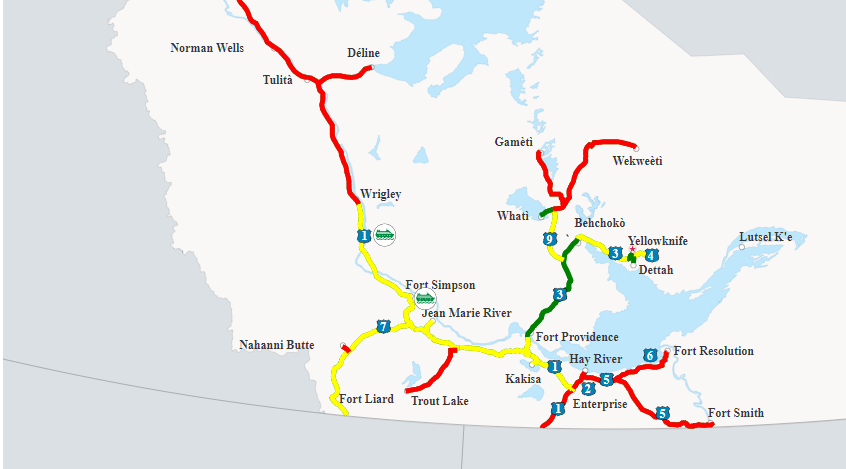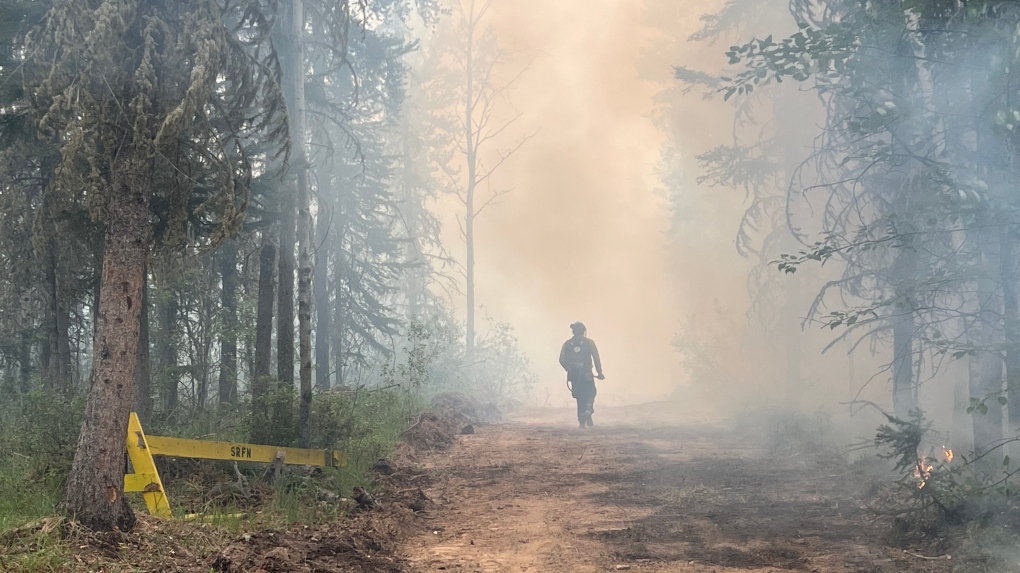Here's where Canadians are living abroad: report
A recent report sheds light on Canadians living abroad--estimated at around four million people in 2016—and the public policies that impact them.
While an evacuation order remains in place for the City of Yellowknife, the municipality has started its re-entry plan for evacuees.
Yellowknife's mayor, Rebecca Atly told CTV News Channel on Tuesday there will be five phases to the re-entry plan.
Holding the fire back and ensuring critical infrastructure is not damaged are the first two steps in the plan, she said.
Officials said in an online update on Monday evening the fire, located about 15 kilometres from the territory's capital, is "not likely to spread beyond existent or predetermined boundaries."
This may come as a relief for the 20,000 residents who were forced to flee their homes more than a week ago.
"Now we're on to phase three, which means we've started calling critical staff back," Alty said. "So for example, water and sewer and the territorial government started to call the hospital staff back."
Once staff are back in the capital, phase four can begin, which is setting up the services and getting the city ready for the return of residents.
Phase five is when the residents of Yellowknife can finally return home.
"Unfortunately, we don't have a date yet for calling all residents home," Alty said. "So we just need a bit more time and patience from residents in that regard."
Fires in the South Slave region are slowing the process of calling essential staff back, Atly said.
As of Tuesday morning, the most direct route from Edmonton —where many evacuees are stationed — to Yellowknife along Highway 1 is closed due to smoke and fire in the area.
 A highway map from the Northwest Territories shows Highway 1 from the Alberta border to Hay River closed. It is the most direct route to Yellowknife. (N.W.T.)
A highway map from the Northwest Territories shows Highway 1 from the Alberta border to Hay River closed. It is the most direct route to Yellowknife. (N.W.T.)
"As much as we're calling people back, now the highway has been shut down. So we've got to wait for the highway to reopen so that folks can come back," she said. "It will take a bit of time to see when the highways reopen."
Atly said the government is hoping the highway will reopen in five days but depending on conditions it "might take a bit more."
The plan is "balancing safety with urgency," Atly said, with more recovery needed after people are back home.
"It will be the basic services needed, but not perfect because we know how much folks need to come home," she said.
The city is working closely with the territorial government and Canada Task Force 2, an incident response team that helped with the recovery in Fort McMurray and in the 2011 Slave Lake wildfires in Alberta.
"I would say that I've been able to sleep better at night ever since they've been here because there's such a wealth of knowledge," Atly said. "They come in with so much experience and lots of templates and tools."
Other logistical considerations are taking place to ensure a smooth re-entry.
Jay Boast, a territorial government spokesperson, told The Canadian Press on Monday that plans will have to consider people scattered across the country.
Other details including flights and fuel will also need to be planned.
"It is going to require a thoughtful and staged approach to bring everybody back," he said.
Residents of the small community of Jean Marie River have already returned but many other areas remain under an evacuation order.
Hot, dry conditions have been fuelling the "out of control" fires in Hay River and Fort Smith where crews have been working to protect structures and hold off the blazes.
In the South Slave region, some structures just south of Hay River in Paradise Gardens and along Patterson Road have been "significantly damaged" as a result of a fire. The blaze is now located 1.5 kilometres west of the town centre and one kilometre from West Point First Nation.
Weather conditions played a factor in how fast the fire travelled toward the community. Crews on Tuesday continue to fight the fire as "record or near-record heat" is expected.
 Heavy smoke in Fort Smith on August 28, 2023 is helping firefighters by shading the sun from the ground. (Alberta wildfire)
Heavy smoke in Fort Smith on August 28, 2023 is helping firefighters by shading the sun from the ground. (Alberta wildfire)
Fort Smith is facing similar difficulties as firefighters held off the fire during a "peak burning period" on Monday.
Crews in the area say the heavy smoke is acting like an "umbrella" shading the ground from the sun.
"Firefighters believe that there would have been more growth if smoke wasn’t present," an update from N.W.T. fire reads.
Officials say no significant growth of the fire was reported on Monday as crews prepare for another hot day.
With files from The Canadian Press.
A recent report sheds light on Canadians living abroad--estimated at around four million people in 2016—and the public policies that impact them.
The 2024 federal budget announced on April 16 included plans to introduce “halal mortgages” as a way to increase access to home ownership.
Polish President Andrzej Duda says while no decision has been made around whether Poland will host nuclear weapons as part of an expansion of the NATO alliance’s nuclear sharing program, his country is willing and prepared to do so.
One person was killed in a six-vehicle crash on Highway 400 in Innisfil Friday evening.
Ontario is now home to an invasive and toxic worm species that can grow up to three feet long and can be dangerous to small animals and pets.
Harvey Weinstein’s lawyer said Saturday that the onetime movie mogul has been hospitalized for a battery of tests after his return to New York City following an appeals court ruling nullifying his 2020 rape conviction.
It's one thing to say you like Taylor Swift and her music, but don't blame CNN's AJ Willingham's when she says she just 'doesn't get' the global phenomenon.
A number of LGBQT+2s groups in Central Alberta are pushing back against a request from the Red Deer South UCP constituency to reinstate MLA Jennifer Johnson into the UCP caucus.
Mookie Betts went 3 for 5, including a triple and an RBI single, as the Los Angeles Dodgers beat the Toronto Blue Jays 4-2 on Saturday.

As if a 4-0 Edmonton Oilers lead in Game 1 of their playoff series with the Los Angeles Kings wasn't good enough, what was announced at Rogers Place during the next TV timeout nearly blew the roof off the downtown arena.
Mounties in Nanaimo, B.C., say two late-night revellers are lucky their allegedly drunken antics weren't reported to police after security cameras captured the men trying to steal a heavy sign from a downtown business.
A property tax bill is perplexing a small townhouse community in Fergus, Ont.
When identical twin sisters Kim and Michelle Krezonoski were invited to compete against some of the world’s most elite female runners at last week’s Boston Marathon, they were in disbelief.
The giant stone statues guarding the Lions Gate Bridge have been dressed in custom Vancouver Canucks jerseys as the NHL playoffs get underway.
A local Oilers fan is hoping to see his team cut through the postseason, so he can cut his hair.
A family from Laval, Que. is looking for answers... and their father's body. He died on vacation in Cuba and authorities sent someone else's body back to Canada.
A former educational assistant is calling attention to the rising violence in Alberta's classrooms.
The federal government says its plan to increase taxes on capital gains is aimed at wealthy Canadians to achieve “tax fairness.”